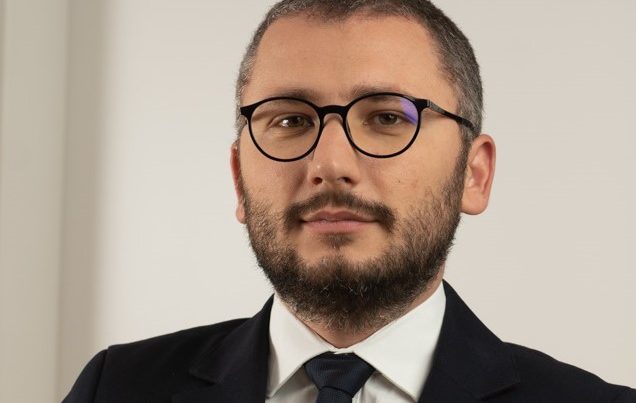The Russian invasion of Ukraine has affected the risk profile of several Eastern European countries. The appetite for solar investment in Romania has not diminished, however, according to local experts who told pv magazine the supply chain has not yet suffered the ramifications of the war over the nation's border.
“I do not think that there is a setback for materials used in the PV industry for the moment in Romania but this is also because there are limited installments,” said Andrei Covatariu, of solar power components shipments. Covatariu, co-founder of sustainability practitioner network Ecera added: “Apart from service providers, which have already some stock, there is not much demand for utility scale PV, at least for now.”
Covatariu told pv magazine the Port of Constanța continues to operate normally, and “even at increased capacity,” with no significant disruption of PV shipments.
pv magazine print edition
As things stand, Romania benefits from its EU and Nato membership. A protracted military confrontation in Ukraine, and a potential escalation are likely to have consequences, however, and not necessarily linear ones. Such a situation could increase the importance of the local PV sector while also complicating logistics.
Mihai Balan, executive director of the Romanian Photovoltaic Industry Association (RPIA), agrees. He said the war in Ukraine is, for now, a manageable shock.
“The Romanian authorities and the country's allies reassured everybody that we are benefiting from the highest guarantees of security,” Balan told pv magazine.
Potential
While such “tranquility” cannot be taken for granted, supply chain issues may also hinder the country’s renewables potential in the medium term, especially for utility scale installations, further complicating expected growth in the PV sector.
The solution envisaged – an increase in manufacturing capacity for crucial components – requires investment, a change in regulation, raw materials, and an increased focus on training PV technicians. While funds may not be a problem, those other pre-requisites are not straightforward to address.
Raw materials
“There is almost a monopoly for processing and raw materials,” said Covatariu. “If the geopolitical tensions increase, there might be even a worse shortage. That would have an impact on costs.”
The sustainability professional said tension in the market could increase if Russia and China clinch a raw materials and rare earths partnership.
Another concern is that the energy-intensive nature of solar component manufacturing could prove problematic in the light of surging electricity costs.

Conservative policies in the energy sector could derail Romanian attempts to increase renewable electricity production and increase dependence on Russian gas, with around 10-20% of the fuel consumed in the country supplied by the aggressor in Ukraine.
“Investors' confidence has been impaired by the governmental measures that introduced a clawback mechanism for renewable electricity priced over €90/MWh, and the possibility to suspend the green certificate scheme this year,” said the RPIA's Balan.
With clean power industry commentators warning Romania should urgently review its land use and storage capacity rules, Balan said: “Ultimately, what should change to accelerate RES [renewable energy sources] investments is the perception authorities, both local and central have towards renewables. All the calls for projects should be transparent and competition-driven.”
Grid hurdles
The electricity network is another problem. The country has flexibility issues at grid level. “There are regions with renewable capacity that cannot accommodate more big scale capacity,” said Covatariu. “We need investments in the grid.”
Helpfully, the EU’s Modernisation Fund is pouring around €16 billion into the Romanian energy sector.
“Recently, the authorities announced €500 million worth of projects for the TSO [electricity transmission system operator] from the Modernisation Fund: it is great news for RES developments but these projects are expected to be completed later in the decade,” said Balan. “Also, from our calculations, the TSO's TYNDP [ten-year network development plan] does not keep up with the necessary investments in new RES capacities to meet Romania's climate targets and ensure its energy security.” More ambitious plans will be needed, he added.
Romania also needs more renewables technician training centers, beyond existing facilities at Constanța and the coal region of Petroșani.
“To increase investments in the PV sectors, it is crucial to educate more installers, technicians, engineers and project developers,” said Balan, adding EU funding could help expand the capacity of existing centers.
Lack of trained photovoltaics personnel is a European issue. Recently, for instance, German companies scoured Romania for installers only to be rebuffed because of local shortages.
Training
“A European training system would be a great initiative for addressing the workforce deficit that will only expand once RES developments are accelerated,” said Balan. “Regional centers that share the same curricula and prepare specialists qualified for working all across Europe might represent a solution.”
Trade body SolarPower Europe has predicted Romania will be Europe's sixth largest market in terms of PV sector job creation, with up to 54,000 full-time employees anticipated by 2025.
Romania is also mulling investment in solar manufacturing to reduce a reliance on Asian imports and sources have told pv magazine a small solar module fab is expected to open next year, and could scale up within a couple of years. As ever, of course, more investment would be helpful.
Funds
The European Commission has presented similar plans as it backs the development of a European battery supply chain and funds for solar manufacturing on the continent are available.
“The RPIA and RWEA [the Romanian Wind Energy Association] have set-up the RESinvest initiative, aimed at developing a robust domestic renewable energy supply chain, for which Romania already has funding available through the National Recovery and Resilience Plan [NRRP] and the Modernisation Fund,” said Balan.
The Romanian NRRP – drafted to secure a slice of the €750 billion made available by the EU to help member states recover from the Covid-19 pandemic – foresees the development of solar cell and panel value chains which will reach a total annual production capacity of at least 200MW in 2025.
Talks
“There is potential for more capacity and we are in talks with the authorities to find the right ways to develop the domestic value chain for clean energy technologies,” added Balan.
Romania's Security Council, led by President Klaus Werner Iohannis, appears to agree and this month clarified the country will need to step up renewables investment. The organization suggested the scale of solar manufacturing developed should be larger as PV is emerging as a key technology to reduce reliance on Russian gas.
Covatariu and Balan both expect to see around 300MW of Romania's first utility scale solar projects finalized this year and anticipate more significant plants in the years ahead.
Small scale
The role of prosumers – who generate as well as consume electricity, via small scale systems – is also expected to be significant and Bucharest in December approved payments to the owners of solar arrays with a generation capacity of up to 200kW for excess energy they export to the grid, with payments guaranteed for the rest of the decade.
“For the moment we cannot provide precise figures but, in the next couple of years we can expect somewhere between 150 and 200MW to be installed annually, which hopefully will grow towards the end of the decade,” said Balan, indicating the first large scale utility projects, and prosumers can help avoid fossil fuel gas use in thermal power plants in the short term. “In the medium term, solar will play a key role in the electrification of industry, replacing fossil fuel gas use with green H2 [hydrogen]; and in the heating sector, in conjunction with the large scale deployment of heat pumps,” he added.
Ambition
When the European Commission published its “Fit-for-55” ambition – referring to the aim of reducing net greenhouse gas emissions at least 55% this decade – it included Romania installing 5.5GW of solar generation capacity by 2030. That was before Russia invaded Ukraine, however.
With hurdles still to overcome to get a solar supply chain established in Romania, Covatariu said: “The main concern is the next winter, or the next two winters. There is a time lag between making a decision; sourcing material; ramping up production, distribution, installation, and testing. The manufacturing capacity in Europe will take time.”
This content is protected by copyright and may not be reused. If you want to cooperate with us and would like to reuse some of our content, please contact: editors@pv-magazine.com.



3 comments
By submitting this form you agree to pv magazine using your data for the purposes of publishing your comment.
Your personal data will only be disclosed or otherwise transmitted to third parties for the purposes of spam filtering or if this is necessary for technical maintenance of the website. Any other transfer to third parties will not take place unless this is justified on the basis of applicable data protection regulations or if pv magazine is legally obliged to do so.
You may revoke this consent at any time with effect for the future, in which case your personal data will be deleted immediately. Otherwise, your data will be deleted if pv magazine has processed your request or the purpose of data storage is fulfilled.
Further information on data privacy can be found in our Data Protection Policy.